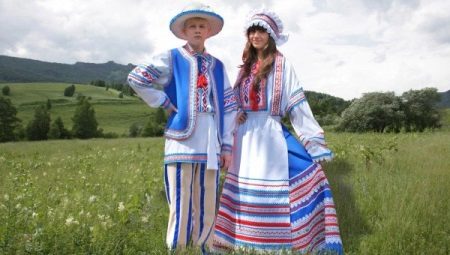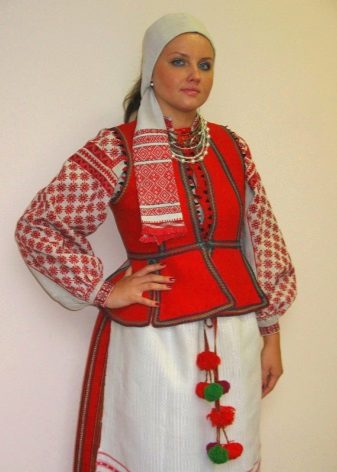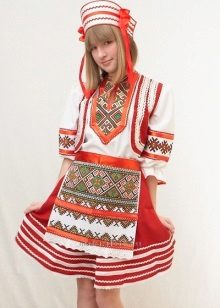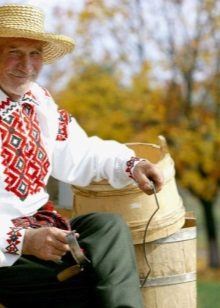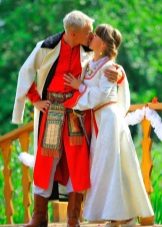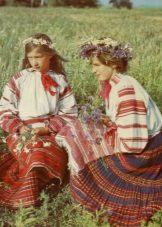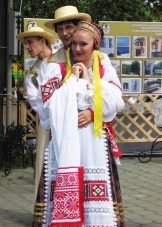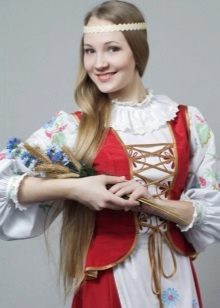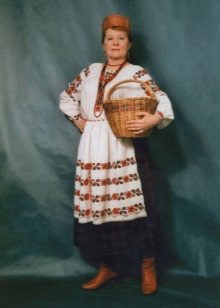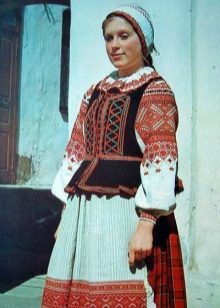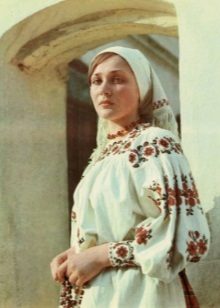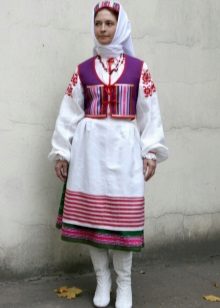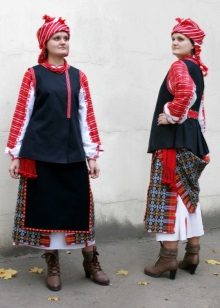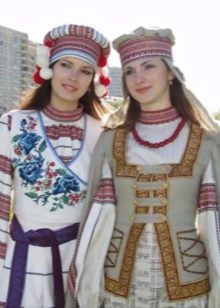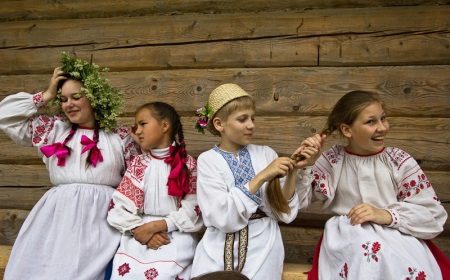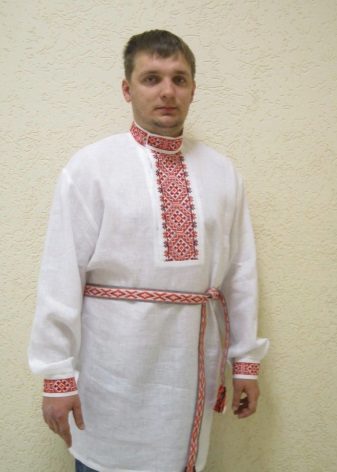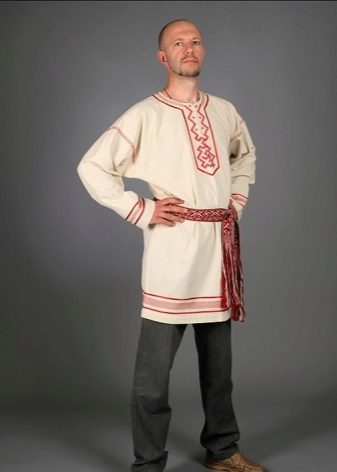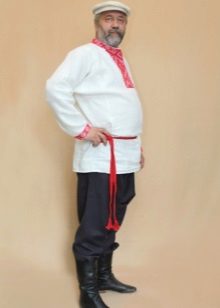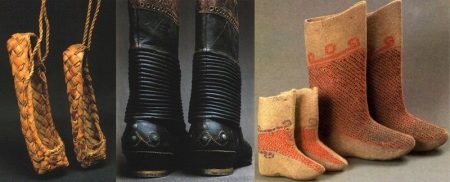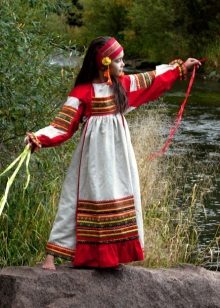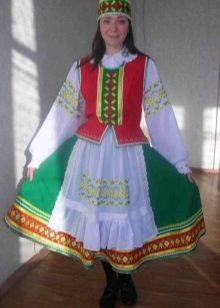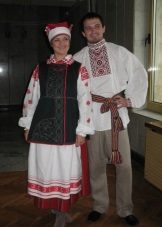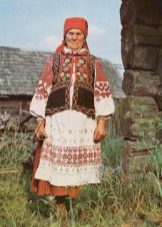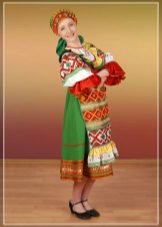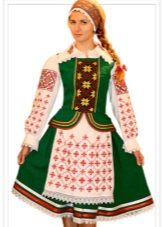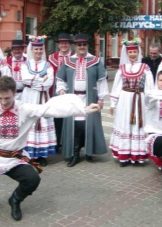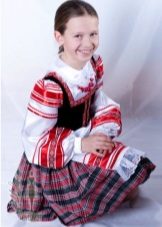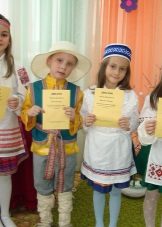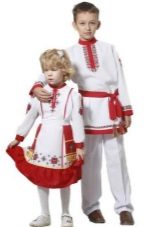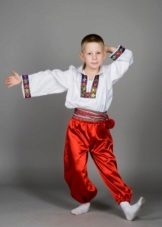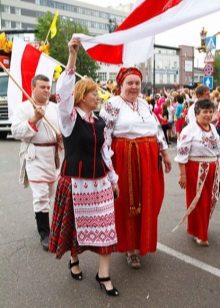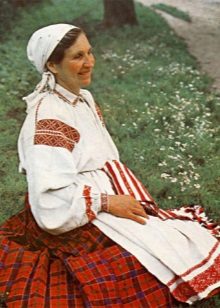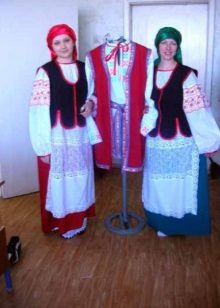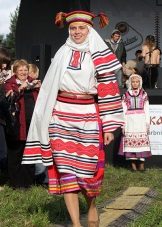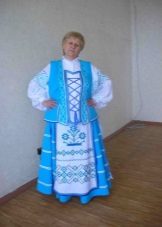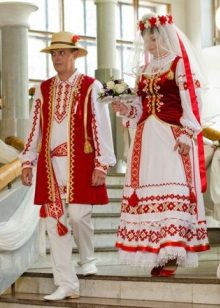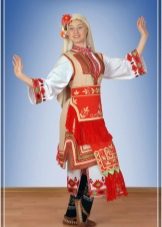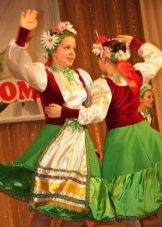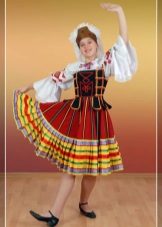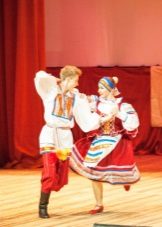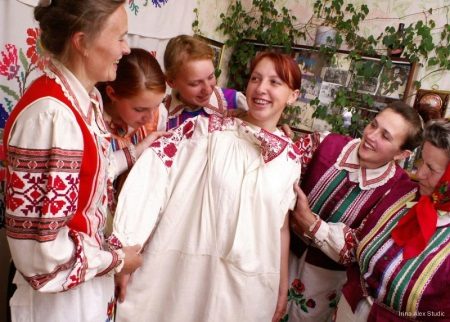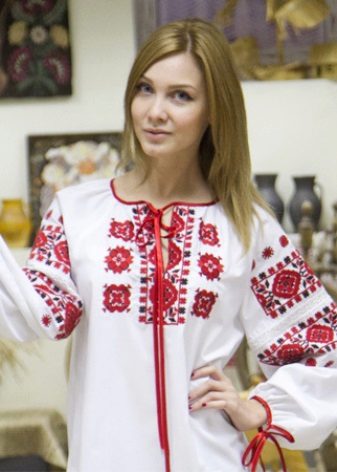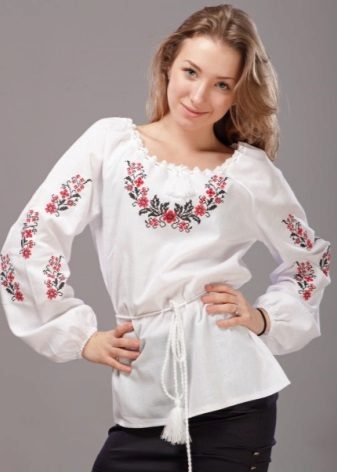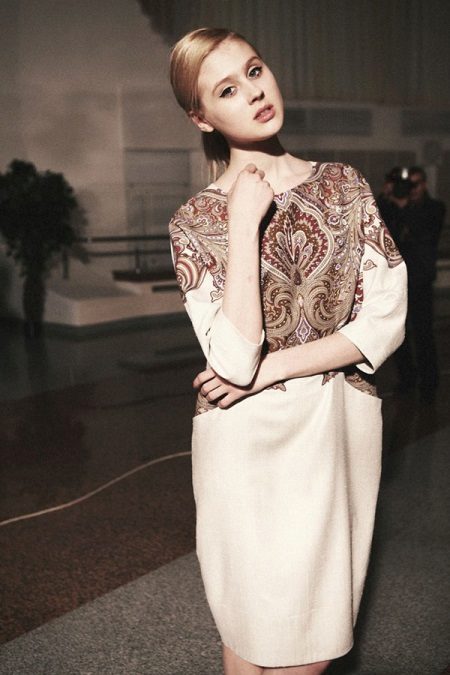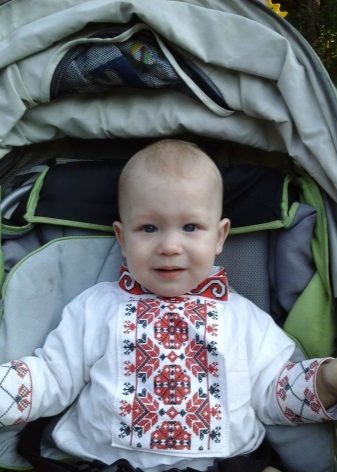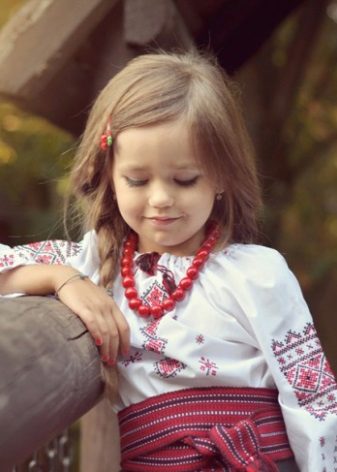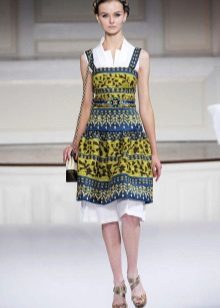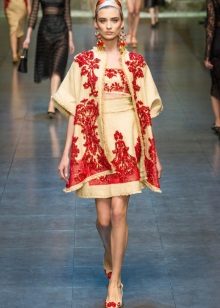In many countries, for example, in German Bavaria or Switzerland, the traditional folk costume is worn not only during national holidays or on stage, but also in everyday life: at home, on the street, even at work. Recently, in the post-Soviet society, there has been a tendency to appeal to folk costumes, whether its elements, characteristic embroidery or interesting styling.
Story
Folk costumes of any country are a direct reflection of its history. Traditional folk costumes are not just garments that can be worn at your discretion, they are historical artifacts, by studying which you can come to a better understanding of living conditions, cultural values, and ethnic characteristics of our ancestors.
The first mentions of the Belarusian folk costume appear at the beginning of the first half of the 10th century. They are rather vague and fragmentary, however, archaeological excavations allowed to recreate the “system” itself, this is also what the ensemble of national clothes is called, and to correlate the chronicle information about the requirements of those times to the male and female costume in their various versions, depending on the person’s origin, his social status, type of activity, region (there are about 30 variations of the costume, correlated with a particular locality), place of residence (city or village), age, family differences.
Finally, the classic look of the Belarusian traditional costume was fixed only at the beginning of the 20th century. One should also take into account the fact that the Belarusian national costume, used by citizens, was not only different from the rural version, but had the characteristic signs of a pronounced influence of European fashion. That is why it is considered to be a model of the national costume of Belarus, the costume of the villager, as having retained the features of authentic identity and identity.
Features
The complex of clothes of the Belarusian national costume appeared in the Middle Ages far from us, gradually forming under the influence of several “neighboring” cultures: Russian, Ukrainian, Lithuanian, Polish, retaining, however, the features inherent only in the Belarusian people: the dominant white color (thanks to which , Belarusians and got their ethnic name).
The decor is in the form of stripes, a complex multi-species ornament, which has characteristic features in each of the six regions of Belarus, which, in turn, were divided into specific areas, which also contributed to the formation of the originality of the national costume.
Bright embroidery was a characteristic element of the decoration of clothes.in which geometrical patterns prevailed, and then firmly applied and plant motifs. As a rule, red yarn was bought for embroidery, sometimes specially tinted to achieve more saturated and deep shades. In some cases, for example, silver or gold threads were used to embroider the head patterns and if the owner had sufficient wealth.
The ornamental pattern seemed to move from one detail of clothing to another, thereby creating a single composition.
Varieties
The national costume of Belarus, as, indeed, any national clothing, has a clear division into casual and festive, male and female, pre-wedding and after-wedding.
The men's casual suit included a shirt, a bottom, and a collar that was decorated with embroidery and girded with a bright belt; ports (one or two, depending on the solvency of the owner); kamiselki (vest); bravaerki (single-breasted jacket with a strap sewn from cloth). In cold weather, again, depending on consistency, either a cloth épancha or sheepskin coat (sheathed with embroidery) or a fur coat (an indicator of great wealth of the owner) was worn. The headdress in the summertime was bryl - a wide-brimmed straw hat, in winter - a fur hat (a hat, to which four parts were sewn, two of which were tied at the top, and two - under the chin).
Footwear - sandals (lykovye, hemp, from a rod), postola (footwear, made of leather), in winter they wore felt boots, which were stitched with felt fabric or leather.
Women's clothing, even casual, differed significantly more various options: cough - white shirt with embroidery (there were three types of cough differing in cut), spadnitsa - skirt (several types differing in fabric (cloth, wool), cut (Andarak, ponev, Letnik, saiyan), color, pattern (red, green-blue, checkered, striped), an apron (was an obligatory part of the wardrobe), garset - a chintz fabric vest, velvet, and for wealthy women - from brocade (also decorated with luxurious embroidery, beads, multicolored braid, applications).
The outerwear of women, despite the similarity of the cut with the male, was still more elegant: woolen scrolls and sheepskin shells. Women's headdresses were also varied - girls were given wreaths or multi-colored ribbons, while the top remained uncovered. Married were required to remove the hair under the cap, on top of which was tied a scarf or namitka (basting). In some regions, it was possible to see the kichka, a horned female headdress, typical of most Slavic peoples.
Women's shoes were not much different from men's shoes, sandals, caraviki (leather shoes), boots, and felt boots.
Festive: This type of national costume differed from everyday life only in brightness, in the splendor of decorative embroidery, in thinner and richer fabrics used for its tailoring, and in the choice of shoes — if the opportunity permitted, on holidays, leather shoes were worn instead of bast shoes. During the holidays, a variety of elegant accessories were added to the women's costume: rings, bracelets, pendants, glass beads, ear hooks (similar to modern earrings), belt buckles, brooches (clasps).
Clothes for girls and boys practically did not differ from clothes for adultsexcept for some details. For example, a girl who wore an apron for the first time was considered a girl, and a girl who replaced a girl wreath with a wedding namitka was considered a woman.
Items
An important feature of the Belarusian ethnic costume is that it belongs to the so-called half-length. Elements of the traditional clothing ensemble of the people of Belarus are a men's belt and a women's apron, indispensable attributes of male and female suits, respectively, which contain deep symbolism - except for utilitarian, practical functions (due to the lack of pockets in clothes, a handbag , and to the belt of a women's apron - keys and various trifles), they have a ceremonial, coastal significance.
While in the warm season, almost the entire population of the village went barefootmaking an exception only for holidays, it was absolutely inconceivable for a man to leave the house without a belt. Even the absence of a headdress could have been, with difficulty, but justified, the absence of a belt of excuses was not and threatened with ridicule and even shame. The women's apron had the same meaning - an additional charm of the female womb.
Silk was used to make a men's belt, this woven wardrobe was expensive and was the pride of the owner. The women's apron was trimmed with lace, embroidery, and decorated with pleats.
A bright distinctive feature of the Belarusian women's costume is a namitka - a headdress that marks the formation of a girl woman in a wedding ceremony. The winding, wound on the head of the bride for the first time, like the modern veil, kept life and was put on the head of the deceased for the second time.
This old Belarusian headdress was a long piece of fabric which was wound over a light wooden hoop that was worn over the head. Despite its simplicity, women managed to knit clothes in a variety of ways, characteristic not just for each region, but even for each village. The stitches were sewn of thin expensive fabrics and decorated with lace, rich embroidery.
the cloth
The available natural materials were used as a fabric for sewing clothes.: flax, called the candle of God, wool, sometimes hemp. In the manufacture of warm clothing options used sheepskin and thick cloth. Dyes also had a natural origin: infusions of various types of herbs, tree bark, marsh ore.
Images
- Decorated with bright traditional embroidery, the shirt looks very stylish and can be successfully worn with a skirt or jeans for a simple but spectacular image in the style of ethnic-casual.
- In a dress decorated with luxurious embroidery in the national Belarusian style, any woman will undoubtedly be the center of attention.
- Also noteworthy is a T-shirt with ethnic patterns that will suit both a young man and a girl.
- Looks great variants of the national ornament on children's things - bright, attractive and original.
- The trends of traditional or well-styled Belarusian-style wedding dresses are becoming increasingly popular.
- Elements and motifs of the Belarusian national costume arouse great interest on the world podiums.
